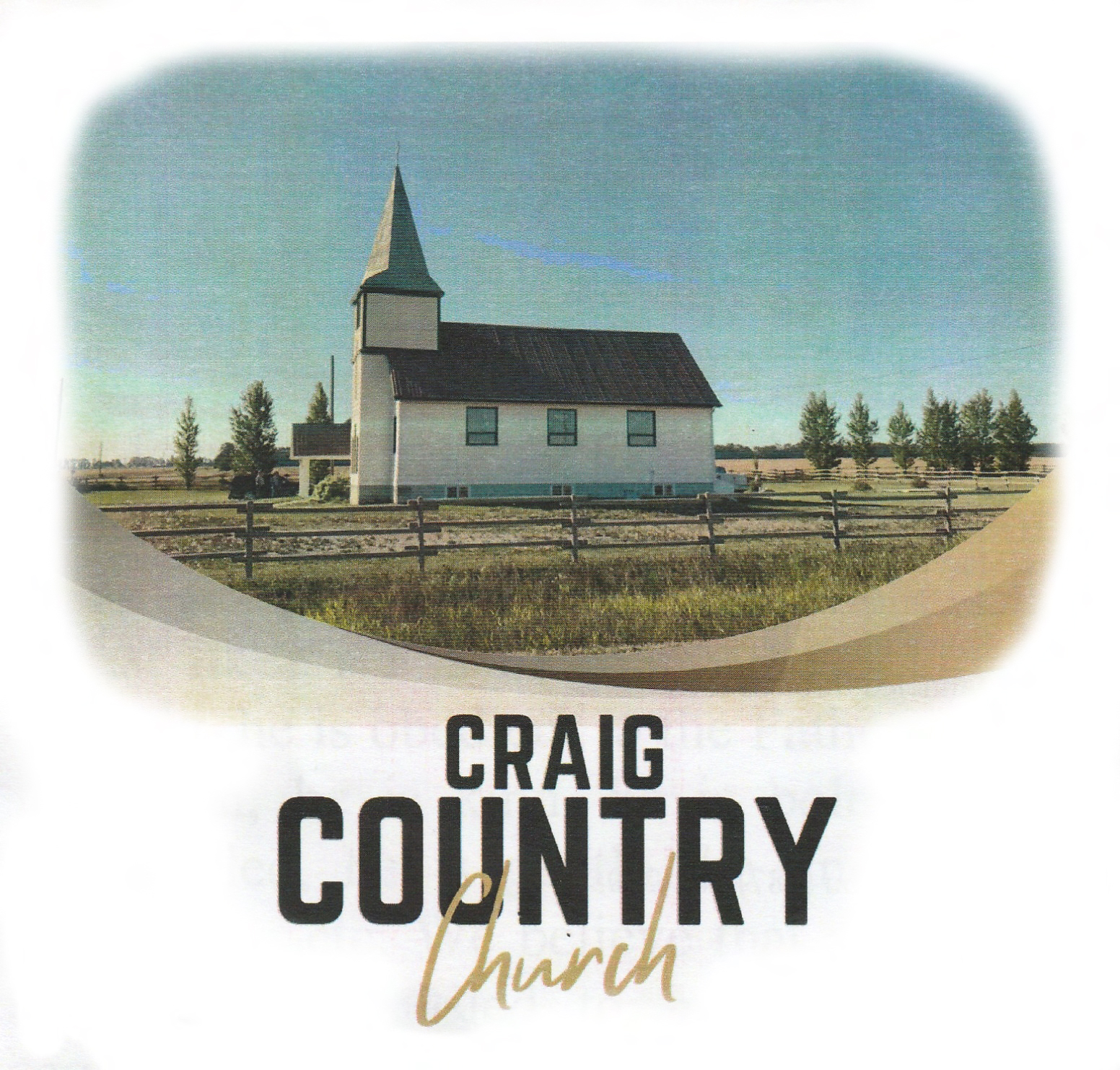Craig Country Church
A History
CRAIG CHURCH BUILDING HISTORY
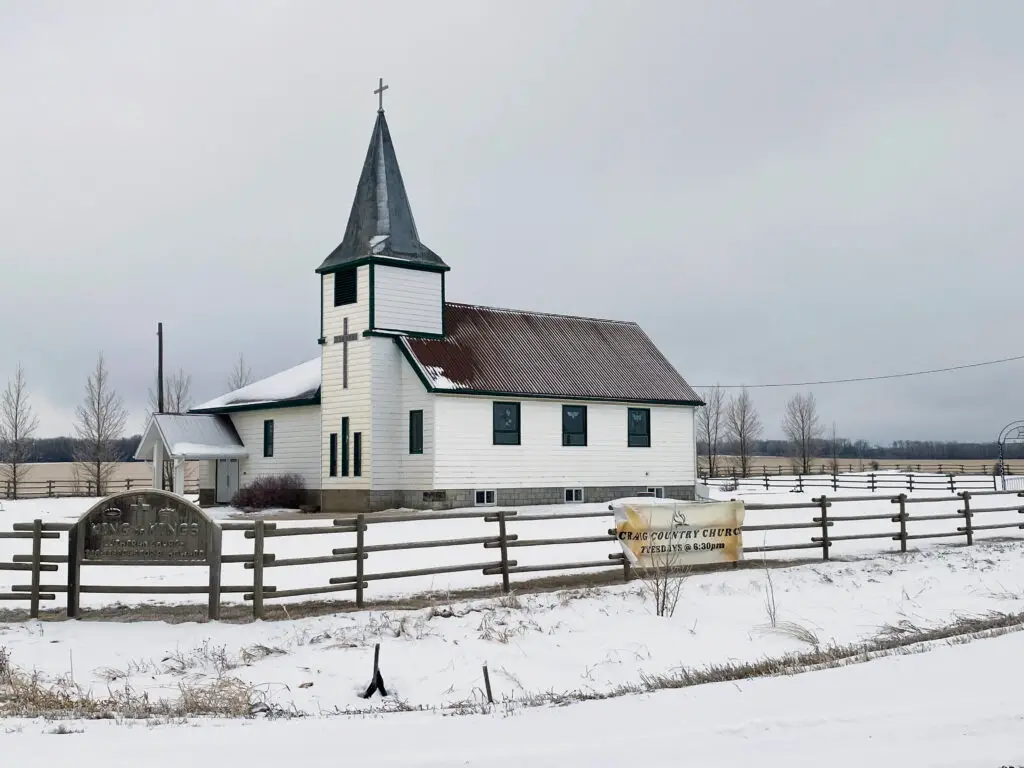
Christ Lutheran Church was built by a handful of German settlers who settled in this community in the 1930’s. When they first arrived and saw there was no church here they took it upon themselves to start a congregation. This community of believers was established in 1931 worshipping in homes.
Leading up to Christ Evangelical Lutheran Church, Craig’s 1931 formal organization, Rev. Paul Natzke provided pastoral service for Lutherans in the Craig district. The first regular pastor of the Craig congregation was Rev. August Meilter serving from December 1931 to January 1936.
The land for the church building and cemetery was donated by Leo Schmidek, one of the founding members of the congregation. On July 4, 1936 under the laws of the Province of Alberta the Certificate of Incorporation was signed.
Pastor Alfred Miller served from April 1936 to December 1942. In August 1940, Leonard Gabert was assigned to work with Pastor Miller. Leonard Gabert was ordained in July of 1942, installed November 1942 at Christ Lutheran and remained until August 1945.
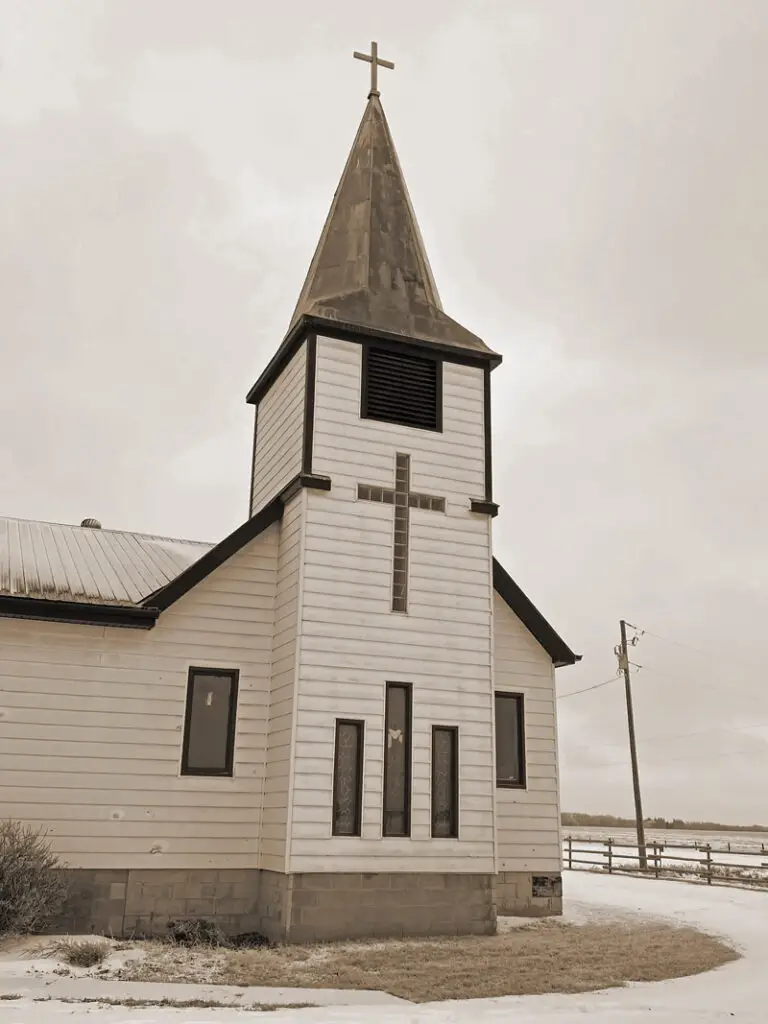
Both Pastor Miller and Pastor Gabert were serving when building construction plans began. During the winter of 1940-1941, treed government land was leased south of Kevisville and members of the congregation felled trees and sawed logs into lumber. July 1941 building plans were finalized and construction of the 22 x 44 foot structure with a tower above the entrance commenced. Congregation members hauled the lumber out by horse and wagon to the church property.
For the foundation, uncrushed gravel was shoveled by hand from the river bank and hauled by horse drawn wagon from the gravel pit located northwest of the Red Deer River Bridge. The concrete was mixed and poured by hand.
H.A. Baron of Edmonton was hired to build the church at a rate of $.90 per hour. During the early stages of the foundation’s construction Mr. Baron was unable to complete the project due to a family emergency.
With the construction barely underway, Alfred (Fred) Lechelt of Nisku was hired, and he completed the outside of the building. The altar and pulpit were also built by Fred Lechelt.

The inside of the church was not complete, however, with rough walls, shiplap floors the congregation began worshipping here. Although the outside construction was completed the inside was very much unfinished. The only thing that graced the inside was the altar and pulpit – the very ones you see here today. The original pews were rough pieces of lumber, so enjoy the seats you are sitting in!
This actual building wasn’t completed until 1942 and the 968 square foot church building was dedicated to the glory of God in 1942.
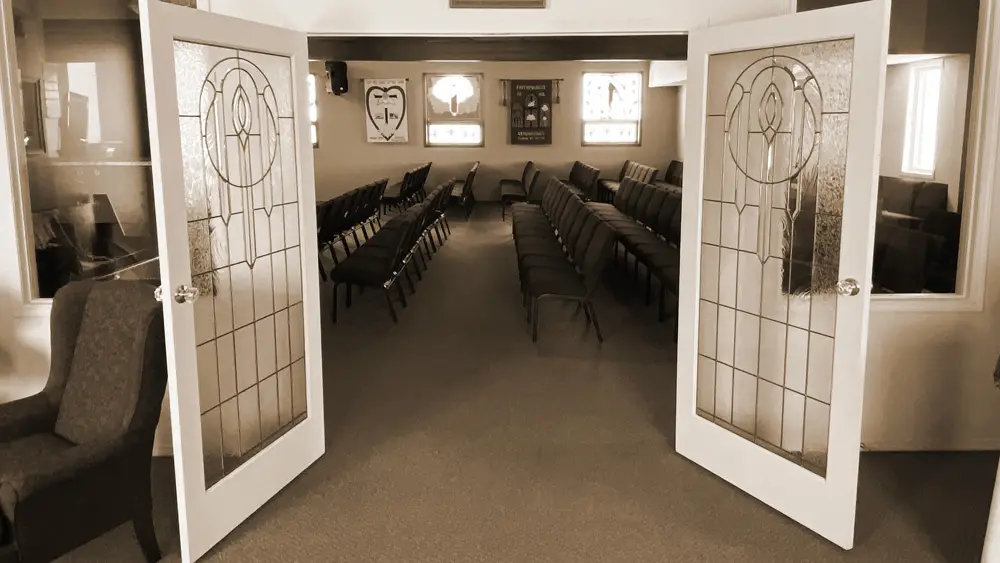
Pastoral vacancy existed from August 1945 to July 1946.The following pastors served in this church building (either the original building or
after the expansion):
• Pastor Albert Reiner – February 1946 to January 1952
• Pastor Paul N. Guebert – September 1952 to July 1955
• Pastor George Derwig – November 1955 to April 1957
• Pastor Edwin Lehman – January 1958 to January 1965
• Pastor William Kronen – September 1965 to September 1971
• Pastoral Vacancy – October 1971 to 1972
• Pastor Kenneth Rodeman – January 1972 to November 1978
• Pastoral Vacancy – end of 1978 to May 1980
• Pastor Terry Lutz – May 1980 to June 2004
• Pastoral Vacancy – June 2004 to July 2005
• Pastor Russell D. Howard – July 2005 to Present
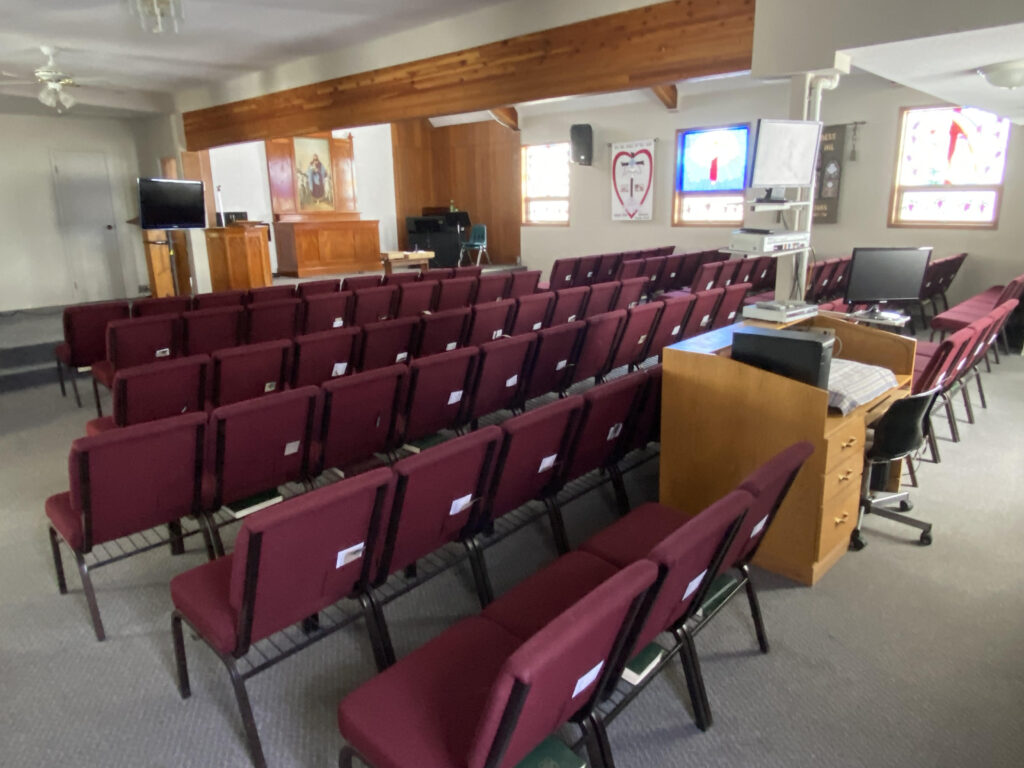
Electricity arrived in 1952 and more comfortable pews in 1958 and many years later…even more comfortable padded pew chairs. In the early 1960 the original wooden cross rotted and fell to the ground and was replaced by a new stainless steel cross. In 1964 a new basement was built due to shifting foundation, cracking and water problems. Dedication service took place in November of that year. On May 19, 1969 a lectern was built by Richard Jensen.
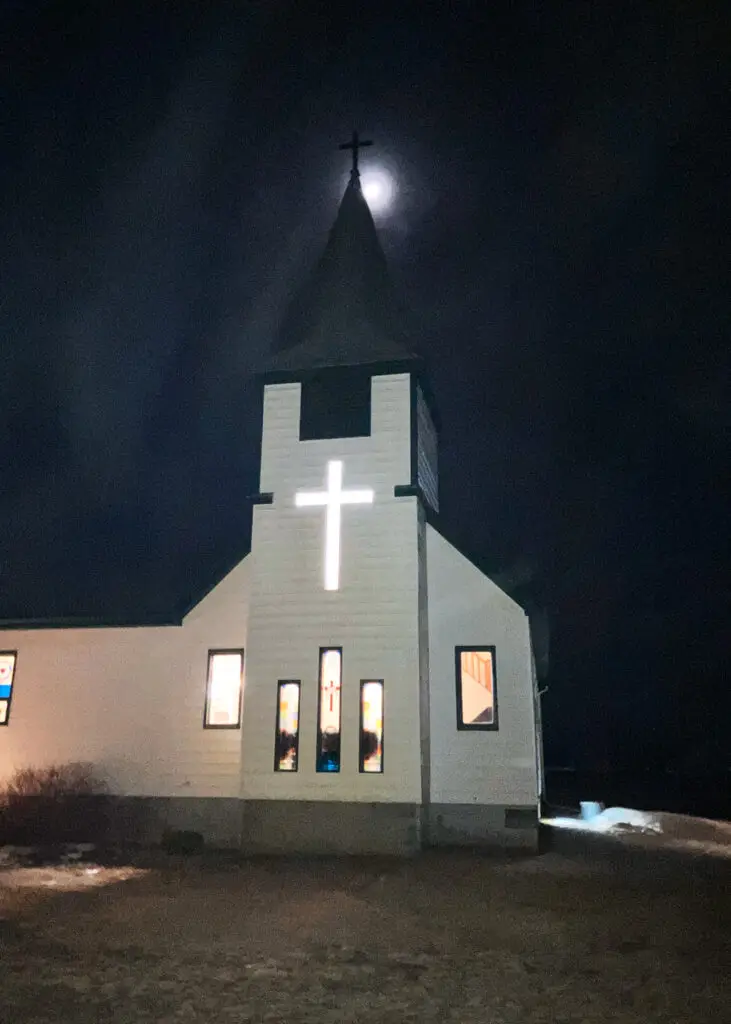
As the years went by the strong German family connection (so apparent in the early years) changed, as the church became a melting pot of different Christian backgrounds and nationalities. The new bonds grew strong, yet having the same common denominator … our belief in, and our love for, our Lord and Savior Jesus Christ.
The church building size also grew. On October 19, 1975 a sod-turning ceremony took place for a church expansion to the south. This addition met the need for a larger sanctuary with increased seating capacity. In the basement, a meeting/fellowship area, a kitchen, four individual classrooms, two washrooms, mechanical room and storage.
Thirty four years after the initial building dedication, a Festival Service of Dedication was held on May 2, 1976 enlarging the church structure to the current-day footprint. A quote from the history book (page 172) “Generations with Christ” regarding rededication service reads as follows:
“The pastor, builder and building committee opened the church doors to the glory of God rededicating the House of God and dedicating the education wing for the teaching and preaching of God’s Word and the administration of the Sacraments.”
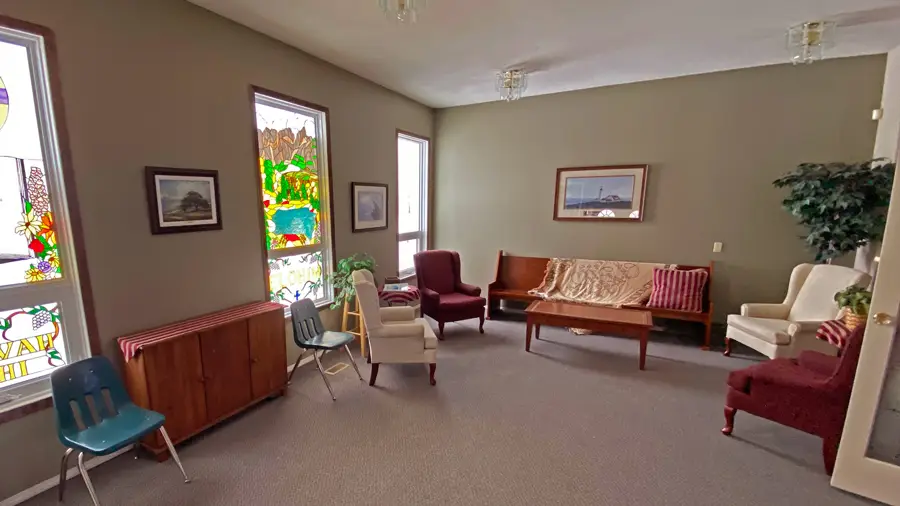
In 1997, 21 years later, saw another major renovation, in which the original entrance was removed and relocated to the south where a larger foyer was created. A cross with glass inserts was created in the steeple. Also, a hallway and coat area was removed, narthex created and the sanctuary expanded. Walls, ceilings and floors on both levels were upgraded. The following year, in 1998, the Howard Thompson family gifted the church with the old Heckla School bell which was installed in the steeple. He had been storing the bell for years and wanted to place it somewhere it would be used.
Some other renovations included an enlarged Pastor’s study in 1983, and in 2000, a band space created by removing the wall to the left of the pulpit and using the walkway and storage area.
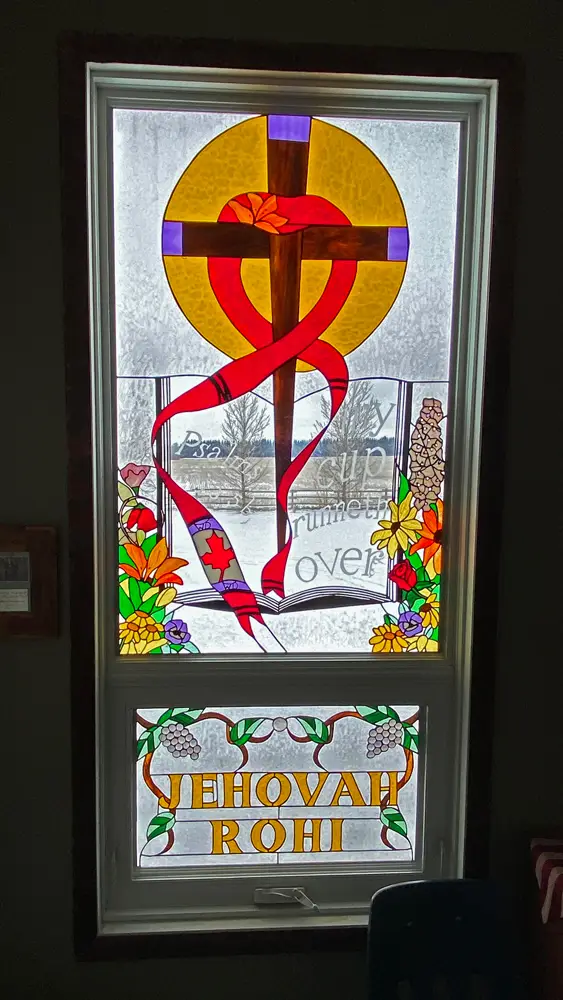
After a major storm August 28, 1986 the art of stained glass was introduced to the congregation by Pastor Terry. The result… the completion of the first stained glass window in 1988….followed by several other beautiful stained glass windows which currently adorn this church building.
The Mosaic Cross which hangs there (point) came to be …and I quote from the history book “Generations with Christ” (page 174):
“One Sunday morning as the congregation entered the sanctuary, each person was asked to choose a piece of broken glass from the broken remnants of the stained glass windows. Everyone laid their broken piece on a clear glass cross on the altar. Pastor Terry then glued each piece of the cross. He explained that when we bring our brokenness to the cross, we are made whole.”
*Information extracted from “ ‘Generations with Christ’, The History of Christ Lutheran
Evangelical Lutheran Church, Craig.
Written and compiled by Della Branson, Markerville, Ab.
December 2010

